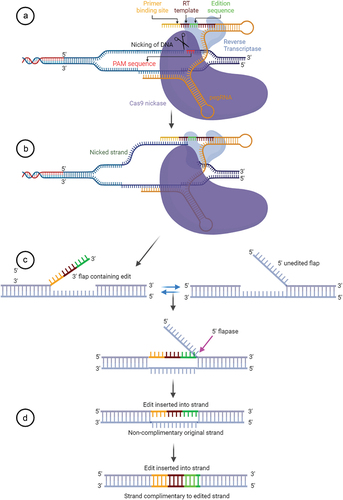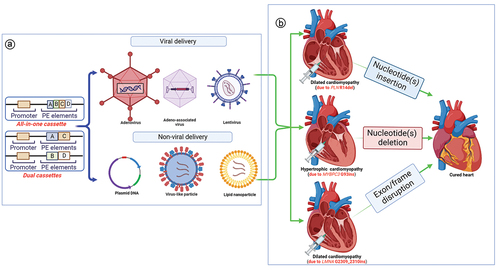Figures & data
Table 1. Genetics of selected inherited cardiovascular diseases.
Figure 1. Graphical description of the prime editing process.

Figure 2. Prime editing for genetic cardiac disorders. (a) Viral and non-viral delivery methods can be employed in “all-in-one” or in dual vector systems to transfer PEs into the nucleus of cardiac cells. (b) The scope of prime editing for correction of cardiac genetic disorders. Prime editing can cover the treatment of nearly all possible genetic defects by nucleotide mutations, sequence disruptions, exon deletions, and even insertions.

